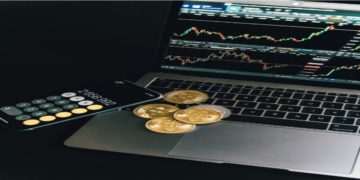Currency markets are often described as a reflection of global sentiment. Among the various forces that drive exchange rates, geopolitical tensions stand out as unpredictable, fast-moving, and highly influential. Whether it is a military conflict, diplomatic standoff, trade war, or economic sanctions, such events can trigger sharp shifts in investor behavior, causing significant volatility across global forex markets.
It is important to understand how geopolitical risks affect currencies for traders, policymakers, and institutions. These tensions not only influence currency values directly but also shape broader market dynamics such as commodity prices, capital flows, and safe-haven demand. In this article, we explore how geopolitical events impact currency markets, which currencies tend to benefit or suffer, and how market participants use strategies such as hedging to manage exposure in uncertain times.
Why Geopolitical Risk Moves Markets
Geopolitical tensions introduce uncertainty, and markets tend to respond by seeking safety. Investors and traders reallocate capital away from perceived riskier assets and toward those considered more stable. In currency markets, this often leads to large and sudden shifts in exchange rates, particularly for countries directly involved in a conflict or diplomatic dispute.
The foreign exchange market operates 24 hours a day, making it the first financial market to react to breaking geopolitical developments. Currency traders must process not only economic fundamentals, but also news related to military activity, sanctions, elections, and diplomatic negotiations.
The impact can range from temporary volatility to long-term structural shifts. For example, a short-term conflict may cause only a temporary decline in regional currencies, while a full-scale war or prolonged trade embargo could lead to sustained depreciation and inflation in affected countries.
Examples of Geopolitical Events and Currency Reaction
Throughout modern history, several geopolitical episodes have left a clear mark on currency markets.
Russia–Ukraine Conflict
The Russian invasion of Ukraine in 2022 had immediate and widespread effects. The Russian ruble fell sharply as Western nations imposed sanctions, froze central bank reserves, and cut off access to global financial systems. At the same time, the euro faced downward pressure due to the economic risks posed to European energy security.
Safe-haven currencies like the U.S. dollar, Swiss franc, and Japanese yen gained strength as investors pulled capital from riskier regions and parked it in more stable economies.
U.S.–China Trade Tensions
The escalating trade dispute between the United States and China between 2018 and 2020 led to volatility in both the Chinese yuan and currencies of countries integrated into global manufacturing supply chains. Tariff announcements and retaliatory measures created waves of uncertainty, with traders reacting instantly to each development.
In many cases, the U.S. dollar strengthened during these periods, reflecting its role as a global safe-haven asset.
Middle East Conflicts
Tensions in the Middle East frequently affect oil-exporting and oil-importing nations differently. Currency movements often correlate with oil price shocks. For example, during attacks on oil facilities or the threat of supply disruption, the currencies of oil-exporting nations may strengthen, while those of import-dependent economies weaken due to the anticipated rise in energy costs.
Safe-Haven Currencies and Flight to Safety
When geopolitical tensions rise, certain currencies tend to appreciate due to their perceived safety and liquidity. These include:
- U.S. Dollar (USD): As the world’s reserve currency and most liquid asset, the dollar often gains during global uncertainty.
- Swiss Franc (CHF): Backed by a stable economy, low inflation, and a strong banking system, the franc is often used as a store of value.
- Japanese Yen (JPY): Despite Japan’s high public debt, the yen is considered a safe-haven due to domestic ownership of government bonds and stable institutions.
Investors often sell risk-sensitive currencies such as those of emerging markets or commodity-dependent nations during global tensions. These include the Turkish lira, South African rand, Mexican peso, and Brazilian real.
How Geopolitical Risk Influences Central Banks
Geopolitical instability complicates monetary policy. Central banks must weigh inflationary pressures caused by supply chain disruptions or commodity shocks against the need to maintain economic growth and market confidence.
For instance, a surge in oil prices due to conflict may push up inflation, but central banks may hesitate to raise interest rates if the economy is already fragile. Currency devaluation, capital outflows, and dwindling reserves may force policymakers to intervene or adjust policy stances more aggressively than planned.
This policy uncertainty often adds another layer of complexity for traders trying to assess how currency values will evolve in response to geopolitical events.
The Role of Hedging During Geopolitical Uncertainty
One of the key strategies used by institutional investors, exporters, importers, and even retail traders during periods of heightened geopolitical risk is hedging. Hedging involves taking positions in the market that reduce or offset potential losses from movements that affect the currency negatively.
Why Hedging Matters
Geopolitical events can disrupt markets without warning. A surprise sanction, political assassination, or outbreak of war can cause exchange rates to gap sharply, bypassing stop-loss orders or triggering margin calls. For businesses and investors with exposure to foreign currencies, these moves can result in significant financial losses.
Hedging helps mitigate this risk by providing a buffer against negative currency swings.
Common Hedging Tools in Forex
Several instruments are used to hedge against currency risk:
- Forward Contracts: Agreements to exchange currencies at a predetermined rate on a future date. Common among corporations and institutional investors.
- Options: Currency options give the right, but not the obligation, to exchange at a certain rate. They offer flexibility and limited downside.
- Currency ETFs or Futures: Useful for gaining exposure or hedging larger currency baskets.
- Counterbalancing Trades: Traders may open opposing positions in correlated currency pairs or assets to manage directional risk.
Retail traders can also hedge by diversifying across multiple currency pairs, adjusting lot sizes, or reducing leverage during periods of instability.
When to Hedge
Not all geopolitical risks warrant immediate hedging. It depends on the likelihood of market disruption, exposure size, and overall portfolio structure. However, when the probability of a significant event increases, such as elections, military escalations, or major sanctions; hedging turns into a wise risk management strategy.
Long-Term Implications of Geopolitical Tensions
While the short-term impact of geopolitical tensions is often reflected in currency volatility, the long-term consequences can reshape economic relationships, trade flows, and monetary alliances.
For example, prolonged conflicts may lead countries to diversify foreign reserves away from traditional currencies, shift to alternative payment systems, or create regional trade blocs that bypass dominant currencies like the U.S. dollar. These shifts influence long-term currency valuation and volatility patterns.
Countries that are seen as politically stable with transparent governance and low external debt are more likely to attract long-term capital, which supports currency resilience over time.
The Impact in Short
Geopolitical tensions are an inescapable part of the global landscape, and their influence on currency markets is both immediate and profound. From sudden capital flows to safe-haven demand and central bank interventions, the effects are complex and often unpredictable. Traders and investors must remain aware of geopolitical developments and prepare for volatility that may arise from even seemingly minor events.
One of the most effective ways to manage currency risk during such times is through hedging, whether using forward contracts, options, or structured diversification. By incorporating risk management practices and monitoring geopolitical indicators, market participants can better protect their positions and respond strategically to a constantly shifting global environment.











































































